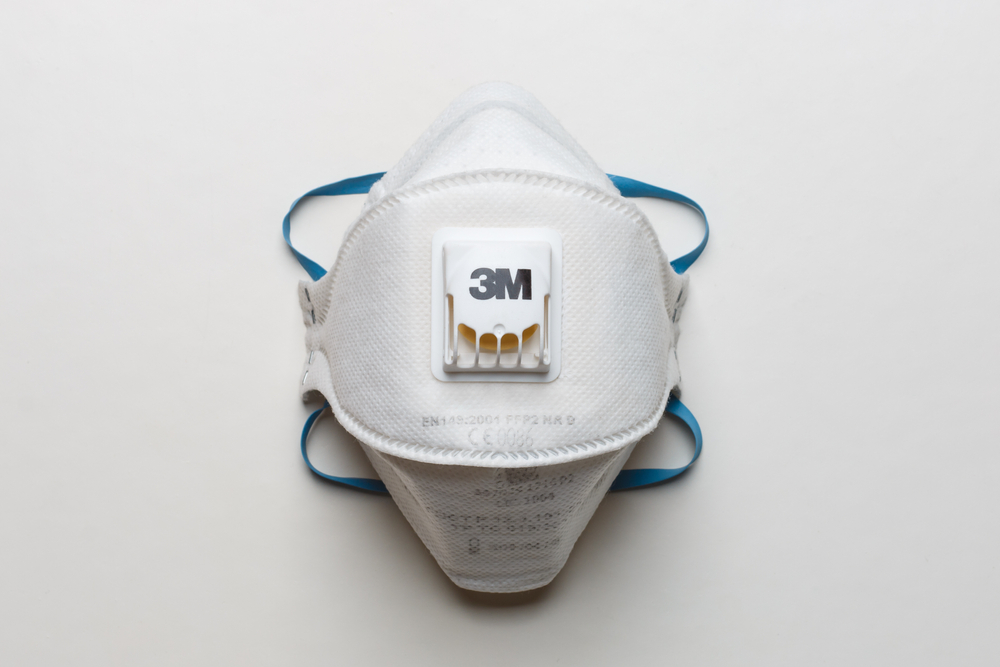Back to Basics is a weekly feature that highlights important but possibly overlooked information that any EHS professional should know. This week, we examine OSHA’s requirements for respiratory protection.
Respiratory protection is important in many different industries, and it has played an even greater role in the workforce since the beginning of the COVID-19 pandemic. According to OSHA, respirators protect against insufficient oxygen environments, harmful dusts, fogs, smokes, mists, gases, vapors, and sprays, which are hazards that could cause cancer, lung impairment, diseases, or death. Millions of employees are required to wear respirators, and compliance with OSHA’s respiratory protection standard can help avoid thousands of illnesses and hundreds of deaths every year.
Standard
It is the employer’s job to ensure that all their employees are protected, and so they must provide the proper respiratory protection when needed. According to OSHA, the respirator standard applies to all occupational airborne exposures to contaminated air where the employee is exposed to hazardous levels of airborne contaminant, required by the employers to wear respirators, or permitted to wear respirators.
Four major duties for the employer are required by the standard. Employers must do the following:
- Use engineering controls where feasible to control the hazard
- Provide the appropriate respirators
- Ensure the use of the appropriate respirators
- Institute a respiratory protection program that complies with the rest of the standard
Employers must select and provide a respirator based on the respiratory hazards that workers are exposed to and workplace and user factors that affect respirator performance and reliability, says OSHA. The respirators must be NIOSH-certified, and shall be used in compliance with the conditions of its certification.
Respiratory hazards in the workplace must be identified and evaluated, and the evaluation should include a reasonable estimate of employee exposures to respiratory hazards and an identification of the contaminant’s chemical state and physical form. If the employer cannot identify or reasonably estimate the employee exposure, the employer must consider the atmosphere to be immediately dangerous to life of health (IDLH).
Respiratory protection programs must be developed in any workplace where respirators are necessary to protect the health of the employee or whenever they are required by the employer. The program must be written and include any worksite-specific procedures, and it must be established, implemented, and updated as necessary to reflect changes in workplace conditions that affect respirator use.
The program should include procedures for selecting respirators for use in the workplace, medical evaluations of employees required to use respirators, and fit-testing procedures for tight-fitting respirators. It should also include procedures for proper use of respirators in routine and reasonably foreseeable emergency situations, and schedules for cleaning, disinfecting, storing, inspecting, repairing, discarding, and maintaining respirators. It needs to ensure adequate air quality, quantity, and flow of breathing air for atmosphere-supplying respirators.
OSHA also requires that employees be trained in the respiratory hazards to which they are potentially exposed during routine and emergency situations, and in the proper use of respirators, including putting on and removing them, any limitations or their use, and their maintenance. Lastly, there must be guidelines for regularly evaluating the effectiveness of the program.
Respirators
Respirators should be selected from an adequate number of respirator models and sizes so that the respirator is acceptable to, and correctly fits, the user. OSHA says that respirators protect the user in two basic ways; the first is by removing contaminants from the air, and the second is by supplying clean respirable air from another source.
The first type of respirators includes particulate respirators, which filter out airborne particles, and air-purifying respirators with cartridges and canisters, which filter out chemicals and gases. The second type includes airline respirators, which use compressed air from a remote source, and self-contained breathing apparatus (SCBA), which include their own air supply.
OSHA provides seven steps on how to wear a respirator correctly at work. The first step is to wash your hands with soap and water, or alcohol-based hand rubs containing at least 60% alcohol. Then, inspect the respirator for damage, and do not use it if it appears damp or damaged. Put on the respirator by following these instructions:
- Cup the respirator in your hand with the nosepiece at your fingertips, with the straps hanging below your hand.
- Cover your mouth and nose with the respirator and make sure there are no gaps between the respirator and your face.
- Place the strap over your head and rest it at the top of the back of the head. If there is another strap, put the bottom strap around your neck below your ears, without crisscrossing the straps.
- If your respirator has a metal nose clip, use your fingers from both hands to mold the nose area to the shape of your nose.
After the respirator is on, adjust it by placing both hands over the respirator, and then inhaling quickly and exhaling. If there is leakage from the nose, readjust the nosepiece, and if there is leakage from the edges, readjust the straps. Keep adjusting until there is a proper seal, and if no proper seal forms, try another respirator.
Step five is to wear it during work, and wash your hands if touching the respirator cannot be avoided. To remove the respirator, wash your hands and then remove it from the back, while not touching the front. The last step is to discard it in a closed-bin waste receptacle, and wash your hands once again. OSHA notes that if you need to reuse the respirator, wear gloves when inspecting and putting it on, and avoid touching your face during the process.
For more details and information on OSHA’s respiratory protection standards, click here.

